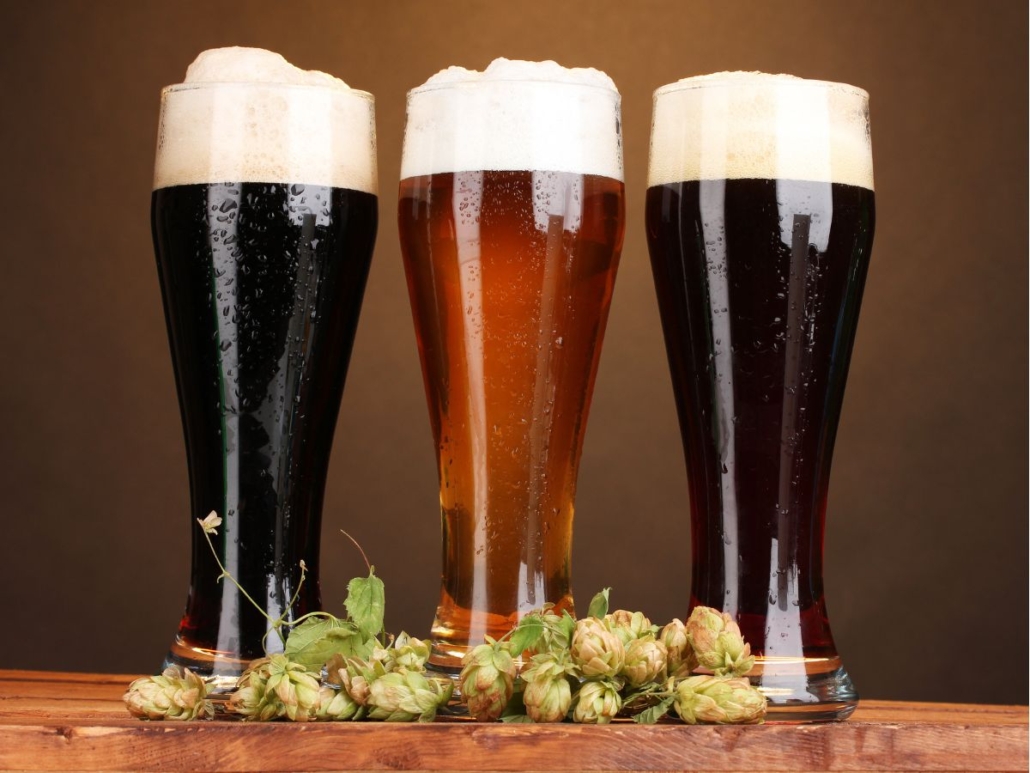Ale vs. Lager – What Is The Difference?

The difference between ale and lager is primarily due to the type of yeast used for fermentation.
When first approaching brewing as a complete beginner it is difficult to categorise exactly what we want to make. When we say beer though there are really two types; ale and lager.
The primary difference between ale and lager is the result of the type of yeast and the typical fermentation temperature.
Ale & Lager Yeast Are Different
Ale and lager differ due to their fermentation but within each type, there is an infinite range of colour, bitterness, aroma and flavour.
When making beer there are two types of yeast used. Ales are fermented with a top-fermenting yeast that forms a dense head on top of the fermenting ale.
Lager on the other hand utilises a bottom-fermenting yeast where the yeast collects at the bottom of the fermenting vessel. These two types of yeast are either top cropping or bottom cropping.
Lager and ale use different types of yeast which ferment in different ways and these distinct strains of yeast prefer different conditions in which to ferment the beer. The primary difference is the temperature at which lager and ale yeasts prefer.
- Ale yeasts (saccharomyces cerevisiae) which are top-fermenting prefer warmer temperatures around 18 – 22°C / 64 – 72°F or around room temperature.
- Lager yeast (saccharomyces pastorianus) which is bottom fermenting prefers cool temperatures around 10 – 13°C / 50 – 55°F which is higher than a refrigerator but cooler than room temperature.
That is not to say that there are no strains of ale or lager yeast that fall outside of these temperature ranges but these are not typical. For instance, you could ferment a beer with lager yeast at an ale temperature and get results. There is still the distinction that the lager yeast is a completely separate strain from ale yeasts.
What Does Lager Actually Mean?
The term lager does not really describe the yeast used. The term “lager” really means that the beer has been stored or conditioned for a period at lower temperatures.
Although not all beer we would call lager goes through this extended period of conditioning the fact is that when beer is fermented at lower temperatures the yeast takes longer to do the job. Lager fermentations at cool temperatures tend to take 2 or 3 times longer than ale fermentations at warmer temperatures.
When we look at these temperatures it becomes apparent that for home brewers, ale is more suited to the beginner brewer who hasn’t got the means to cool a fermenting vessel.
What Do Ales & Lagers Have In Common?
When we think of lager we tend to think of pale, cold and subtle flavoured pilsners more than dark, robust Schwarz beer.
The truth is that both lager and ale can range in colour from really pale to incredibly dark, using a variety of dark, roasted malts.
Bitterness from hops can also vary widely in both ale and lager. The most common lagers we see typically have low bitterness but that is not to say that all lagers are like this.
When we look at the most common beer styles we tend to see a narrow range of beers with a limited degree of variety within that style.
Pilsner and Helles are types of lagers that are very pale, delicately hopped, clean and crisp tasting.
Beers such as stouts or IPAs some of the most common styles of ale and quite far removed from pilsner so we tend to see a large gap between ale and lager.
When you look at some of the less common ale and lager styles however you see the ingredients of ale and lager can be used interchangeably the only real difference between the two are the type of yeast used.
While we try to define beers there is clearly lots of crossover and the possibility of hybrid-style beers. Whether you class a beer as a lager or an ale is of no importance unless it tastes good.




Leave a Reply
Want to join the discussion?Feel free to contribute!